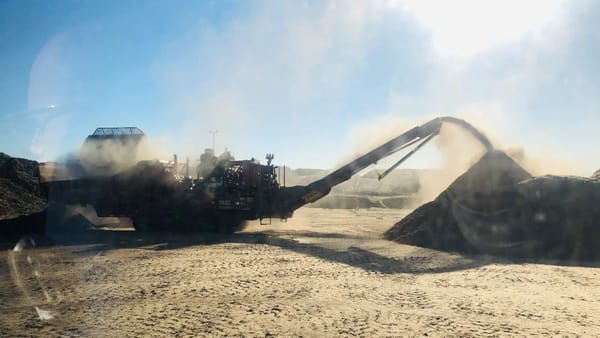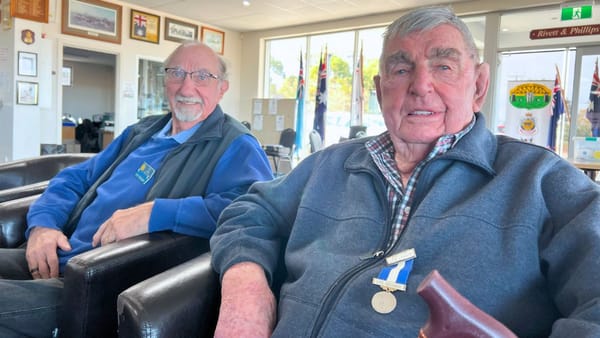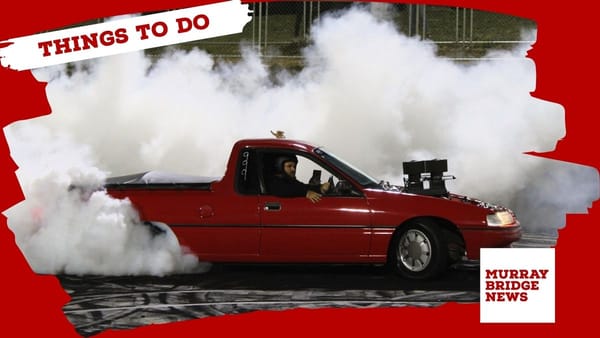Slavery still exists and it's more common than you think, Murray Bridge Soroptimists hear
Associate Professor Marinella Marmo explains what modern slavery looks like and how it can be stopped.

This post was originally published behind Murray Bridge News’ paywall. Paywalled posts are unlocked four weeks after publication. Can’t wait that long? Subscribe here.
Slavery still exists and it’s more common than you think, members of Soroptimist International Murray Bridge have heard.
If someone asks you to think of a slave, you may think of somebody in ancient times, or the Middle Ages, or even during the settlement of the New World.
They would be shackled in chains, wearing rags, and forced to live out their laborious life under the watchful eye of their masters.
In short, you would not likely think of South Australia.
However, while it might not look like it used to, experts like Flinders University Associate Professor Marinella Marmo – the guest speaker at an International Women’s Day event the Soroptimists hosted at the Cameo Cinema last month – have found slavery still exists, even in Australia.
In rural areas it had been found in food industries, such as agriculture and horticulture; in city areas, it was mostly in hospitality and retail.
“Slavery is everywhere,” Professor Marmo said.
“The truth is, we don’t know what conditions people are kept in, and we don’t know if we have a direct link to the slavery chain.
“Lots of people think of a long line … describing slavery in the extreme, but it’s not that in the (everyday) context.”

In a study she conducted in 2019, she defined slavery as “the condition of a person over whom any or all of the powers attaching to the right of ownership are exercised … extreme exploitation … a gross violation of human rights, as they reduce a person to a commodity to be exploited”.
Examples of modern slavery included forced labour, forced marriage, trafficking and domestic and sexual servitude in intimate partner cases linked to partner visas.
Professor Marmo said modern slavery described an instance where “a person does not give free informed consent, and they cannot freely walk away”.
“It’s not just about underpaying employees … its also involves elements such as debt bondage, sexual harassment, deception, isolation and more,” she said.
The more these factors were imposed on a person by their workplace, the more vulnerable they were, and the more likely they were subjected to exploitation.
Professor Marmo said that international cases of modern slavery were common in the production of clothing, chocolate, cosmetics – even smartphones.
In Australia, 84 per cent of victims were women, and 14 per cent men, correlating with overseas trends.

Slavery can manifest as domestic violence or wage theft
An issue with modern slavery in Australia was its mis-labelling, she said.
“In some cases, people received support from social services like family violence, but that was mis-labelling the situation and providing the wrong social support,” she said.
“They’re not being considered federal support victims of trafficking but (rather) victims of domestic violence.
“The two are different, because people on temporary visas need different levels of protection.”
Similarly, in an investigation of certain companies in SA where labour hire contractors were employed at low costs and worker harassment and mistreatment was extreme, the report did not refer to the exploitation of workers as a slavery-like practice; rather, the issue was categorised as “wage underpayment”.
Professor Marmo said the best way to combat slavery or slavery-like practices was through raising awareness, and she was grateful the Murray Bridge community was continuing the dialogue.
“Often victims don’t want to speak up or talk to the police, so its up to the rest of the community … we need to be knowledgable,” she said.
“It’s about lots of people observing and thinking all together, and teachers and service providers advance the conversation so much quicker.
“Each instance (of slavery-like practices) is a disgrace to the entire society. We would have to consider our values on a professional level occuring all around us.”
While it seems insurmountable, and at times even undetectable, Professor Marmo said modern slavery was an issue that could be solved.
“Its not difficult to reach out to the right people,” she said.
“And as consumers, we have the power to buy different brands of clothing, of chocolate.
“If we can make changes for the environment, like reducing our use of plastic, we can make changes around slavery.”
- Discover your “slavery footprint”: Take the quiz at slaveryfootprint.org/survey.
- Participate in a Flinders University research project about perceptions of modern slavery in an Australian context: qualtrics.flinders.edu.au.
- More information: Search for “Stop Modern Slavery SA” on Facebook.





